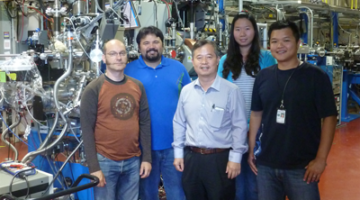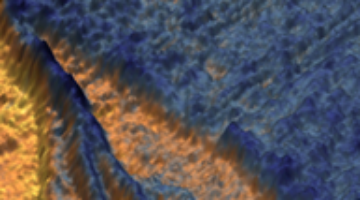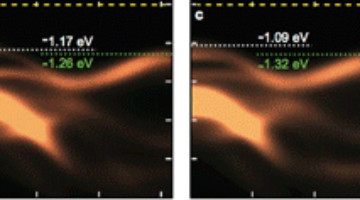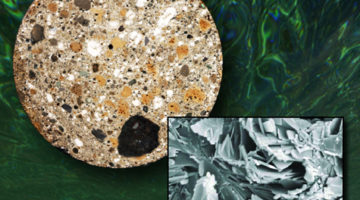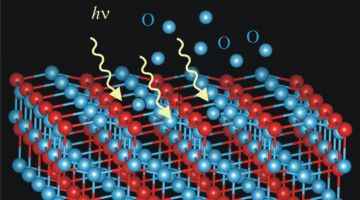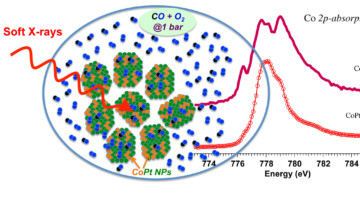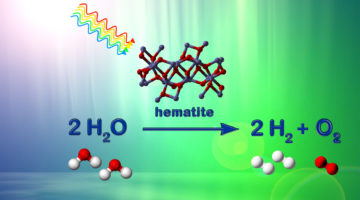ALS researchers have discovered a material that is essentially a 3D version of graphene — the 2D sheets of carbon through which electrons race at many times the speed at which they move through silicon. The discovery promises exciting new things to come for the high-tech industry, including much faster transistors and far more compact hard drives. Read more »![]()
![]()
ALS Work Using Spectroscopy
These techniques are used to study the energies of particles that are emitted or absorbed by samples that are exposed to the light-source beam and are commonly used to determine the characteristics of chemical bonding and electron motion.
Toyota Collaborates with the ALS and Molecular Foundry
Toyota has been working at the ALS for a few years now to gain deeper insight into the chemistry of electrolytes for use in magnesium-ion batteries. The hope is that the research eventually leads to a fully developed magnesium-based battery technology that would replace lithium-ion batteries with essentially twice the energy in the same volume. Toyota hopes to move toward this goal more quickly through a new collaborative research project at the ALS and the Molecular Foundry. Read more »
New ALS Technique Gives Nanoscale Views of Complex Systems
A new broadband imaging technique looks inside the mesoscale realm with unprecedented sensitivity and range. Synchrotron Infrared Nano-Spectroscopy (SINS) will enable in-depth study of complex molecular systems, including liquid batteries, living cells, novel electronic materials, and stardust.
Read more »![]()
![]()
IBM Probes Material Capabilities at the ALS
Vanadium dioxide, one of the few known materials that acts like an insulator at low temperatures but like a metal at warmer temperatures, is a somewhat futuristic material that could yield faster and much more energy-efficient electronic devices. Researchers from IBM’s forward-thinking Spintronic Science and Applications Center (SpinAps) recently used the ALS to gain greater insight into vanadium dioxide’s unusual phase transition. Read more »![]()
![]()
Minding the Gap Makes for More Efficient Solar Cells
Using novel materials to develop thin, flexible, and more efficient photovoltaic cells is one of the hottest topics in current materials research. A class of transition metals undergoes a dramatic change that makes them ideal for solar energy applications. Read more »
Learning from Roman Seawater Concrete
Analyses of ancient concrete samples pinpointed why the best Roman concrete was superior to most modern concrete in durability, why its manufacture was less environmentally damaging, and how these improvements could be adopted in the modern world. Read more »![]()
![]()
New Light on a Famous Insulator: Photoinduced Polaronic Conduction in Anatase
Using angle-resolved photoemission spectroscopy (ARPES), researchers have shown that the number of conduction electrons in anatase, as well as their degree of correlation, can be patterned by exposure to UV light in a controllable and reversible way. Read more »
Chemistry of Cobalt-Platinum Nanocatalysts
Bimetallic cobalt-platinum (CoPt) nanoparticles are drawing attention in many areas of catalysis as scientists tackle the quest to reduce precious metal content while maintaining optimum catalytic selectivity and reactivity. Researchers explored the role of Pt in Co reducing and oxidizing, and found that the catalytic properties of monometallic and bimetallic nanoparticles of Co are closely related to the oxidation state of Co. Read more »![]()
![]()
Chloride Depletion in Aged Sea Salt Particles
Elemental and chemical imaging analyses showed that sea salt particles react with water-soluble organic acids in the atmosphere through a unique mechanism which had been overlooked in atmospheric chemistry. The reactions release volatile hydrogen chloride into the atmosphere and leave behind sea salt particles drained of chloride.
Read more »
Two Electron Holes in Hematite Facilitate Water Splitting
Hematite is a promising electrode material for solar-powered water splitting—an important reqirement for producing hydrogen fuel with zero emissions. At Beamline 7.0.1, researchers have gained a better understanding of hematite’s electronic structure through soft x-ray spectroscopy performed in situ and “operando.” Read more »![]()
![]()

